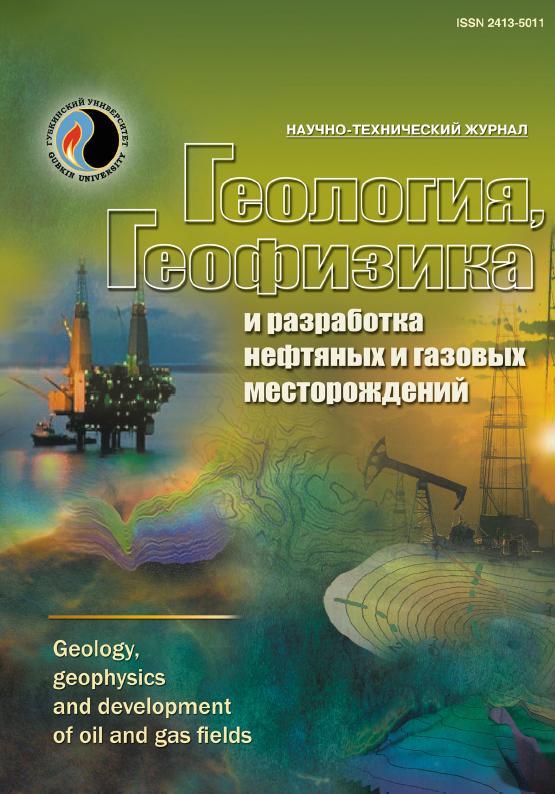Solution of the problem of high-quality cementing of oil and gas wells
UDC: 622.245.1
DOI: 10.33285/2413-5011-2022-5(365)-58-62
Authors:
SVALOV ALEXANDER M. 1
1
1 Oil and Gas Research Institute Russian Academy of Sciences (OGRI RAS), Moscow, Russia
Keywords: cementing of wells, tightness of wells annular space, wellbore expansion, spring centralizer, expanding grouting materials
Annotation:
Wells cementing is one of the key operations during their construction, the purpose of which is to form a strong and hermetic annular space of a well. Poor-quality cementing leads to overflowing of reservoir fluids, the consequence of which is the loss of extracted hydrocarbon raw materials and flooding of productive layers by water from neighboring water-saturated layers. There also appear environmental complications caused by the entry of hydrocarbon fluids, toxic liquids used in technologies for stimulating the production of reservoir hydrocarbons, such as hydraulic fracturing of a productive formation, acid treatment of bottom-hole zones of wells, etc., into the overlying strata of rocks, including those saturated by fresh water. The loss of tightness of the annular space of liquidated spent wells can also cause significant negative environmental consequences.
To radically increase the strength and level of tightness of oil and gas wells annuluses, it is proposed at the stage of their construction in the intervals of impermeable rocks, at least in one site, to expand the wellbore with subsequent inclusion at the level of this site in the layout of the casing string centering devices with a nominal diameter exceeding the initial diameter of the wellbore. Tamponing of this site by expanding materials will lead to the formation of at least one solid volumetric inclusion in the annulus of the well, reinforced by metal elements of the centering device (spring centralizer), which will significantly increase the level of its tightness when exposed to destructive loads developing in the rock. In the case of liquidated wells, the proposed method assumes cutting out some part of the casing string.
Bibliography:
1. Ekologiya pri stroitel’stve neftyanykh i gazovykh skvazhin: ucheb. posobie dlya studentov vuzov / A.I. Bulatov, E.Yu. Voloshchenko, G.V. Kusov, O.V. Savenok. – Krasnodar: Prosveshchenie-Yug, 2011. – 603 s.
2. Ustarevshie neftegazovye tekhnologii dobychi kak istochnik predstoyashchikh ekologicheskikh kataklizmov / S.N. Zakirov, E.S. Zakirov, I.M. Indrupskiy, D.P. Anikeev, A.R. Lukmanov, D.S. Klimov // Ekologicheskiy vestnik Rossii. – 2019. – № 8. – S. 20–25.
3. Abandoned oil and gas wells are leaking methane across the USA [Elektronnyy resurs]. – URL: http//inhabitat.com/abandoned-oil-and-gas-wells-are-leaking-methane-across-the-USA
4. Plugging and abandonment of oil and gas wells// Working Document of the NPC North American Resource Development Study Made Available September 15, 2011. – Paper 2-25. [Elektronnyy resurs]. – URL: http://www.npc.org/prudent-development-topic-papers/2-25-well-plugging-and- abandonment-paper.pdf
5. Bulatov A.I., Savenok O.V. Zakanchivanie neftyanykh i gazovykh skvazhin: teoriya i praktika. – Krasnodar: Prosveshchenie-Yug, 2010. – 539 s.
6. Mil’shteyn V.M. Tsementirovanie burovykh skvazhin. – Krasnodar: Prosveshchenie-Yug, 2003. – 375 s.
7. Svalov A.M. Mekhanika protsessov bureniya i neftegazodobychi. – M.: Knizhnyy dom "Librokom", 2009. – 256 s.
8. Svalov A.M. Mekhanizm razgermetizatsii zatrubnogo prostranstva skvazhiny pri provedenii gidrorazryva plasta // Fiziko-tekhnicheskie problemy razrabotki poleznykh iskopaemykh. – 2021. – № 1. – S. 21–27.

